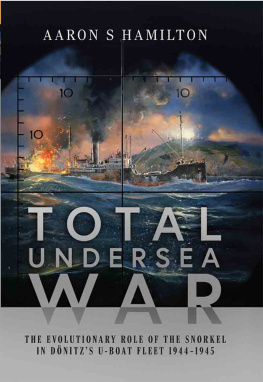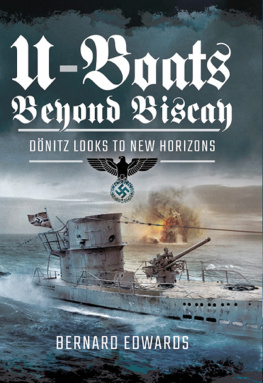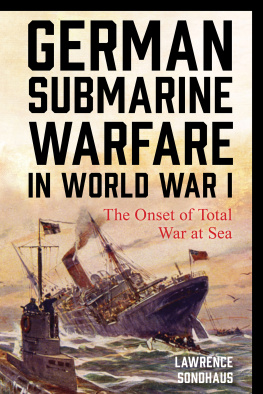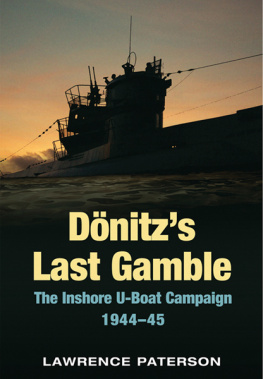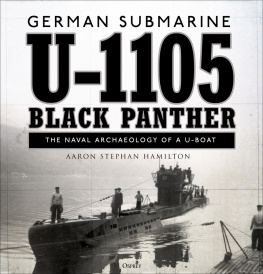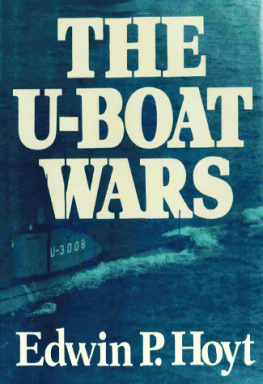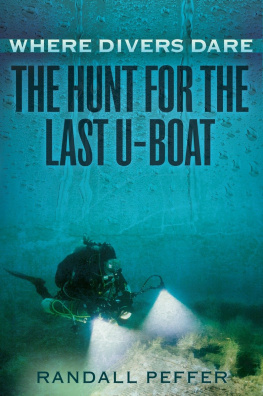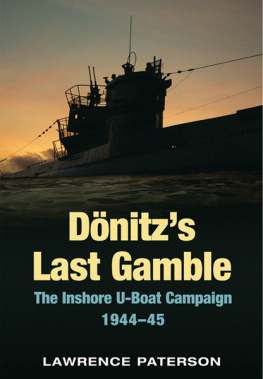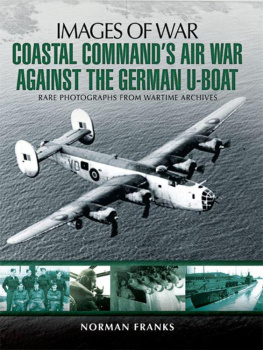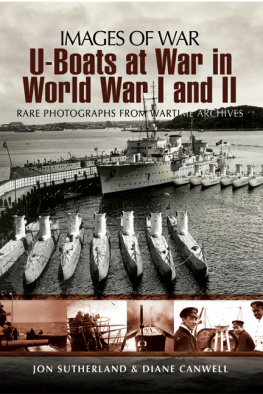Pagebreaks of the print version

TOTAL UNDERSEA WAR
TOTAL UNDERSEA WAR
THE EVOLUTIONARY ROLE OF THE SNORKEL IN DNITZS U-BOAT FLEET, 19441945
Aaron S. Hamilton
For submariners the world over .
They all face the same enemy the unyielding pressure of the oceans depths .
Frontispiece : The German snorkel device revolutionised undersea warfare. The once surface-bound submersible was turned into a true submarine capable of remaining submerged almost indefinitely. This late-war innovation frustrated Allied intelligence and anti-submarine search technology, well into the age of nuclear power. After World War II the snorkel was introduced by all navies around the world, most notably in the ever-expanding Soviet submarine force. In this photograph, Engineer Emil Hymowitz, Chief of the US Navys Search Radar Unit, pilots a captured German snorkel mounted on a sub-simulator around the Chesapeake Bay, in 1956. The German snorkel was used to test out new radar search systems designed to locate a snorkeling submarine during the Cold War. (Official US Navy Photo, Authors Collection)
Copyright Aaron S Hamilton 2020
First published in Great Britain in 2020 by
Seaforth Publishing,
A division of Pen & Sword Books Ltd,
47 Church Street,
Barnsley S70 2AS
www.seaforthpublishing.com
British Library Cataloguing in Publication Data
A catalogue record for this book is available from the British Library
ISBN 978 1 5267 7880 2 (hardback)
ISBN 978 1 5267 7881 9 (epub)
ISBN 978 1 5267 7882 6 (kindle)
All rights reserved. No part of this publication may be reproduced or transmitted in any form or by any means, electronic or mechanical, including photocopying, recording, or any information storage and retrieval system, without prior permission in writing of both the copyright owner and the above publisher.
The right of Aaron S Hamilton to be identified as the author of this work has been asserted by him in accordance with the Copyright, Designs and Patents Act 1988.
Pen & Sword Books Limited incorporates the imprints of Atlas, Archaeology, Aviation,
Discovery, Family History, Fiction, History, Maritime, Military, Military Classics, Politics, Select,
Transport, True Crime, Air World, Frontline Publishing, Leo Cooper,
Remember When, Seaforth Publishing, The Praetorian Press, Wharncliffe Local History,
Wharncliffe Transport, Wharncliffe True Crime and White Owl
Maps by Peter Wilkinson
Acknowledgements
This book was a six-year research project that spanned two continents, four countries, nearly a dozen libraries, as well as public and private archives. I read every surviving U-boat war diary, known as Kriegstachbuch (KTB), of all snorkel-equipped U-boats that conducted a wartime patrol. All available German wartime technical documents that could be located were consulted. Allied Ultra intercepts for each snorkel-equipped U-boat were examined, as well as every available intelligence assessment of late war U-boat operations and technical development. More than a dozen interviews were conducted with maritime archaeologists, members of the dive community, researchers and even one of the few remaining members of the U-boat veteran community. I personally dived several snorkel-equipped U-boat wrecks. Yet, this book would never have been published without the support and encouragement of many individuals.
Chief among them is US Navy (Rtd) Captain Jerry Mason, who operates the online U-boat research website, www.uboatarchive.net . Jerry supported my work with enthusiasm from the very start and helped review hundreds of U-boat KTBs to identify snorkel installations and their configurations. Jerry selflessly provided primary documents from his extensive collection and offered his expertise to any questions I had. Without exception, Jerrys website is the single best source for primary documents about the Battle of the Atlantic on the internet. Royal Air Force Air Commodore Derek Waller (Rtd) contributed significantly by sharing his years of dogged archival investigation into late war U-boat dispositions. Derek also identified significant sources of primary documents from the Public Records Office and Gosport Archives that were critical to this study. Dr Axel Niestl, a noted U-boat authority, graciously reviewed several early chapters and offered important corrections. Maritime archeologist Dr Innes McCartney surveyed more snorkel-equipped U-boat wreck sites than perhaps anyone in the world.

